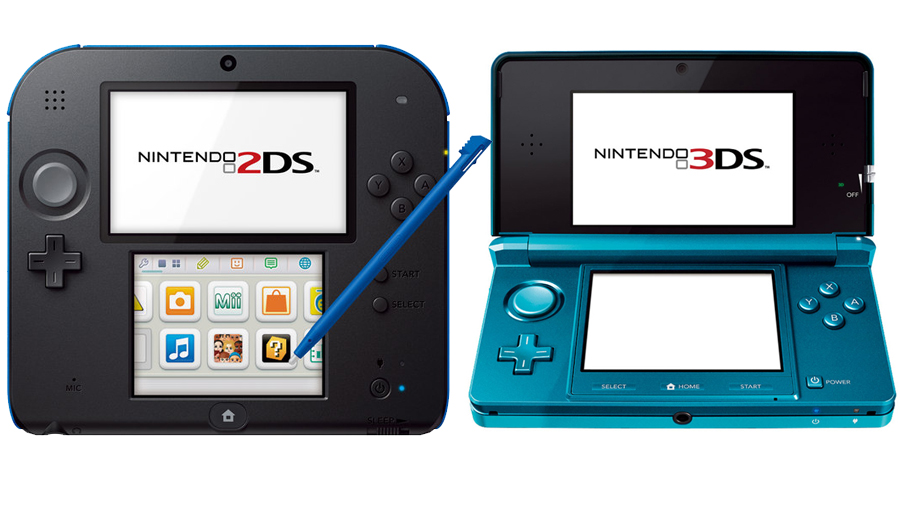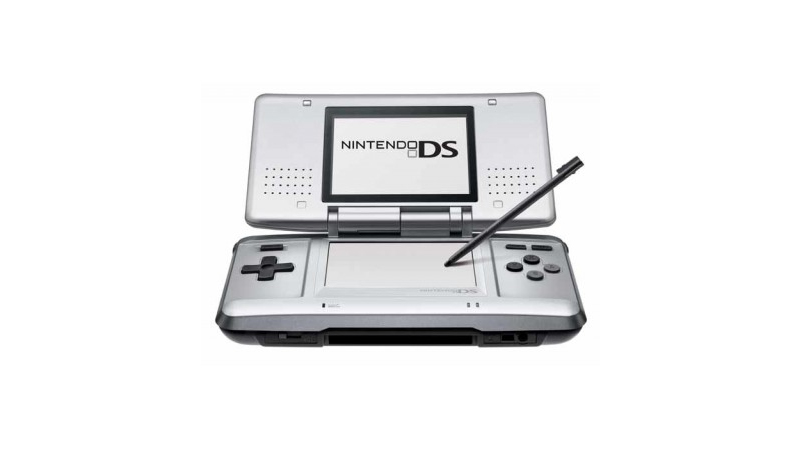TechRadar Verdict
Despite the oddball interface, the Nintendo DS (2004) is simply enormous fun, filled with genuine possibility, and thus is far more the thinking gamer's handheld than the multi-talented high-brow PSP can ever hope to be.
Pros
- +
Portability
- +
Battery life
- +
Excellent catalogue of innovative games
Cons
- -
Graphics performance
- -
User interface (post iPhone)
- -
Display size and shape
Why you can trust TechRadar

Since the first Nintendo DS model released in 2004, there have been various iterations on the dual-screen console. For currently available models, check out our reviews of the 3D-enabled flagship New Nintendo 3DS XL, the 2D-only New Nintendo 2DS XL, or the cheaper, wedge-shaped Nintendo 2DS.
For those after a single-screen handheld that can truly play AAA games, head to our Nintendo Switch review.
Update: This model has now been discontinued. See the box right for alternative DS models, or read on below for our original Nintendo DS review...
Nintendo has long-dominated the portable gaming space. But the brand's handheld devices had a curious genesis.
First up, the original Gameboy and GameBoy Color had a brick-like, toy-ish quality that made it look natural only in the hands of children. The follow-up Gameboy Advance was slightly more attractive, but no more mature. It was also cursed with a screen that was seriously lacking and some users took to soldering in cathode lights to make it usable (yep, that actually happened).
But after that, Nintendo (rather unexpectedly) got things very, very right. The GameBoy Advance SP sported a design that was so elegant and grown-up that it revolutionised the social perception of handheld consoles.
Suddenly, unveiling your Gameboy on the plane drew admiring glances regardless of your age. Genuinely pocket-sized and utterly desirable, it seemed Nintendo was taking intelligent cues from the Mac school of design.
This made it all the more disappointing that the Nintendo DS, its latest handheld, had clearly suffered a lengthy entanglement with the ugly tree. Although it's a genuinely progressive piece of hardware, it's far more likely to draw laughter rather than lust when you use it in public.

Silver plastic has had its blingy moment in the sun, and on the DS's big frame looks quite tacky. The introduction of new colour schemes next year should do it some favours – the jet black model especially will give it a much sleeker appearance – but it's unquestionably lost the aesthetic war with Sony's impending rival, the PlayStation Portable (PSP). Being a pure games machine with no extra features, the DS is also in the shadow of the PSP's movie and music functions, too.
Sign up for breaking news, reviews, opinion, top tech deals, and more.
But where it has won out is in innovation. Its second screen is a PDA-style touchpad, immediately opening up a good half-dozen new ways to interface with games - drawing, rubbing, dragging, pushing, pulling, writing...
The DS sports a second screen that became a staple feature of the DS family of devices, even if the hybrid Switch console has questioned how long that will last.
The second screen is essentially a PDA-style touchpad, immediately opening up a good half-dozen new ways to interface with games: drawing, rubbing, dragging, pushing, pulling, writing...
The most unexpected surprise from the DS was how intuitive and easy it is to steer Mario 64's primary coloured heroes or Metroid Prime's first-person perspective using the touchscreen and the console's bundled thumb cap.

What's a thumb cap, you ask? It's a small plastic nipple on the end of shoelace-like strap attached to the DS, which slips over your thumb so you can use the bottom screen in a similar fashion to a laptop touchpad, without risking greasy, acidic thumbprints all over the screen.
In practice, it's eerily similar to using a Nintendo 64 or PlayStation analogue stick, and nowhere near as gimmicky as it might sound. Even better yet is breaking out the included stylus for the many mini-games on Super Mario DS – using it to draw paths for falling puzzle pieces or aiming a cartoon catapult at a bomb-filled sky can't help but raise a geeky smile.
Hence, it's the opportunities the touchscreen presents, rather than the DS being capable of Nintendo 64-quality 3D graphics, that's the console's most compelling feature.
Its built-in wireless multiplayer (using a slightly modified 802.11b standard) is well implemented and straightforward, though that famous British reserve means you may balk at engaging a complete stranger within a 20 metre radius in competition.
The discreet microphone, too, throws up some interesting possibilities: could voice-controlled games could be on the horizon?
With an unexpected rush of sales in its US launch week, the DS has neatly avoided the 'what were they thinking?' obscurity that many predicted. And despite the oddball interface, it is simply enormous fun, filled with genuine possibility, and thus is far more the thinking gamer's handheld than the multi-talented high-brow PSP can ever hope to be.
It's hard not to be thoroughly charmed by it, but we wouldn't blame you for feeling a little embarrassed at the same time.
- The 22 best Nintendo DS games: all the titles you absolutely need to revisit
The TechRadar hive mind. The Megazord. The Voltron. When our powers combine, we become 'TECHRADAR STAFF'. You'll usually see this author name when the entire team has collaborated on a project or an article, whether that's a run-down ranking of our favorite Marvel films, or a round-up of all the coolest things we've collectively seen at annual tech shows like CES and MWC. We are one.
